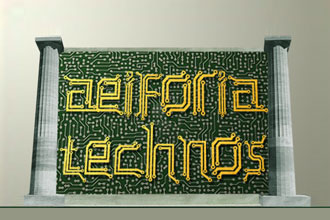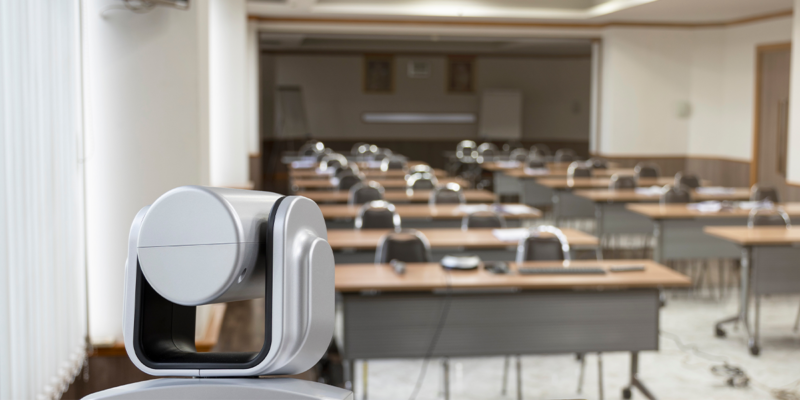Higher Ed on the Hot Streak Down a Green Path
 The lofty halls and ivory towers of academia have been a cornerstone in the sustainability movement and continue to be a beacon for those looking to become learned students of sustainability. We see this in a rise in curricula, degree programs and students matriculating into careers in sustainability in a range of disciplines from business, science, engineering, technology and even the arts. Even if not a degree path, students embrace sustainability as a way of life with recycling drives and competitions between dorms to reduce energy consumption, as well as community activism and service focused on energy savings and sustainable food. The administrations have taken on a larger role as well providing funding, locations, and opportunity for sustainability events and programs including even institutional renewable energy programs and outward commitments to sustainability. This is all the feel good side of the Green movement but also has real economic impact for the universities who maintain and operate large portfolios of buildings with often times even larger energy bills.
The lofty halls and ivory towers of academia have been a cornerstone in the sustainability movement and continue to be a beacon for those looking to become learned students of sustainability. We see this in a rise in curricula, degree programs and students matriculating into careers in sustainability in a range of disciplines from business, science, engineering, technology and even the arts. Even if not a degree path, students embrace sustainability as a way of life with recycling drives and competitions between dorms to reduce energy consumption, as well as community activism and service focused on energy savings and sustainable food. The administrations have taken on a larger role as well providing funding, locations, and opportunity for sustainability events and programs including even institutional renewable energy programs and outward commitments to sustainability. This is all the feel good side of the Green movement but also has real economic impact for the universities who maintain and operate large portfolios of buildings with often times even larger energy bills.
The Association for the Advancement of Sustainability in Higher Education includes over 1,000 members and over 600 schools that are using their sophisticated sustainability tracking assessment and rating system. Out of the 4,500 or so colleges and universities in the U.S., 75 percent are either signatories of the American College and University President’s Climate Commitment, submitted greenhouse gas inventories or indoctrinated climate action plans. These actions give academia a big boost in perceived improved image amongst perspective and current students especially those that couple their efforts with degree programs and academic opportunity for their student body and faculty. This directly correlates to higher enrollment numbers and larger alumni donations as the colleges and universities are leveraging these programs in massive PR campaigns to compete in any number of rankings including the EPA Green Power Partnership’s Top 30 College and University list. According the Princeton Review, schools that had solid commitments to sustainability attracted the attention of a greater number of prospective students by more than 60 percent over others in general due to the attitude of the millennials as described in one of my recent articles for rAVe. Just as that article described for the workplace, the same holds true for academic institutions. Millennials vote with their conscience and their wallets and since they have strong beliefs that climate change is real and caused by humans, they look to align themselves with institutions that share those beliefs.
This all makes academic environments ripe for opportunity for sustainability experts including services and products to help deliver on the expectations of these institutions. Out of the billions spent annually on products, projects, and services most have a green option and has become the norm for academic procurement priority. A 2013 study done by the National Association of Educational Procurement and SciQuest indicate that campuses have official sustainable product and service priority first initiatives by as much as 65 percent and often find themselves scrambling to meet these quotas due to a lack of registered service and product providers. Of all of the products and services reported, technology ranked the highest as the top priority alongside paper and plastics. This bodes well for the ICT industries that have the services and products to not only provide state-of-the-art solutions but in an energy efficient manner especially as technology are only going to continue its upward infiltration of the academic environment.
Another reason that the academic environment is vital to the sustainability movement is that many in the professional world feel the movement is on the decline as we have seen related to push-back of several green rating systems, LEED in particular as well as a lack of projects seeking these measures. It is arguable that based on the definition of what a social movement is will be the ultimate determining factor as to the true influence of academia and sustainability. Some of this is aligned with the recent decline and stagnation of the economy in which many felt pursuing sustainability solutions was cost prohibitive rightly or wrongly while others feels momentum may be lost due to normalization of the Green movement.
Based on a white paper by EBSCO Research Starters, there are four main stages of social movements in which the sustainability clear fits. These include emergence, coalescence, bureaucratization, and decline. Decline in this context does not indicate a negative, but instead can have four different meanings that include repression, co-optation, success and failure. I bring this up because many feel that academia may be the next leg of the movement coming out of emergence and into coalescence and landing in the formalization phase rather than at the decline stage.
As many in the professional world may have leapt into a grass roots effort towards sustainability giving the feeling of rapid advancement by forming many committees, programs, and rating systems including the EPA and Energy Star, USGBC with LEED, and the AIA launching the Committee on the Environment all stemming from the environmental social movements of the ’60s, ’70s and ’80s. Where I think the difference is lies in the lessons learned and the maturity of the movement. As the professionals have laid out the path, it gave academia a method and platform to follow and also has encouraged the younger generation to pick up the cause.
Where this will wind up with when it does decline very well may be in the mainstreaming of sustainability where the movement will no longer be needed. This is the best of outcomes and hints as to why many may feel it is in decline today as only 12 percent of architecture firms are meeting industry targets for energy efficiency equating to only 1 percent of total square footage of available real estate. This is in stark contrast to the academic pursuits in green building design and mandates and points to a potential renaissance in future commercial green building growth as the economy continues to recover and students, have lived in proactive sustainable environments, move into the workforce and continue to demand greater accountability towards sustainability.
For now though, the service providers and manufacturers can lend that helping hand towards the academic world reaching its lofty goals of healthier, more sustainable places of learning setting the seeds for the successful decline of the sustainable movement.





